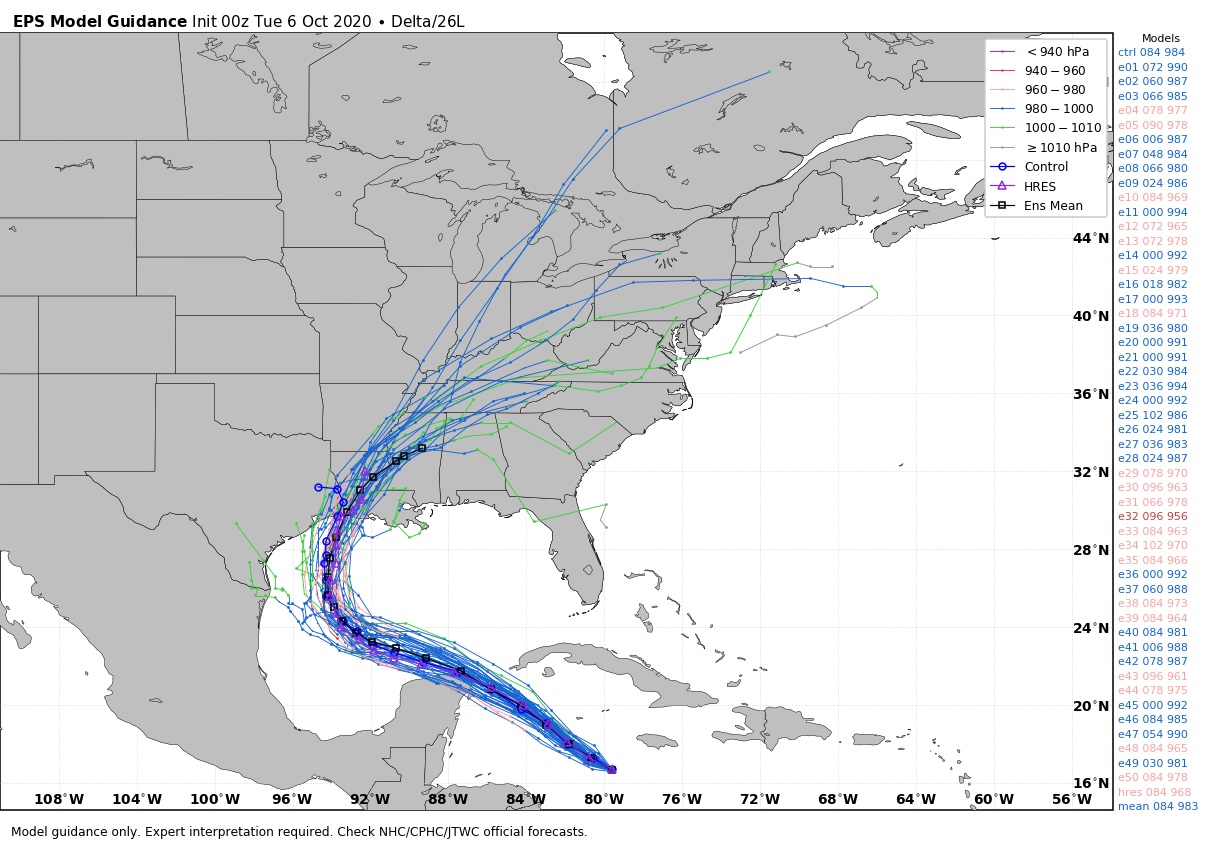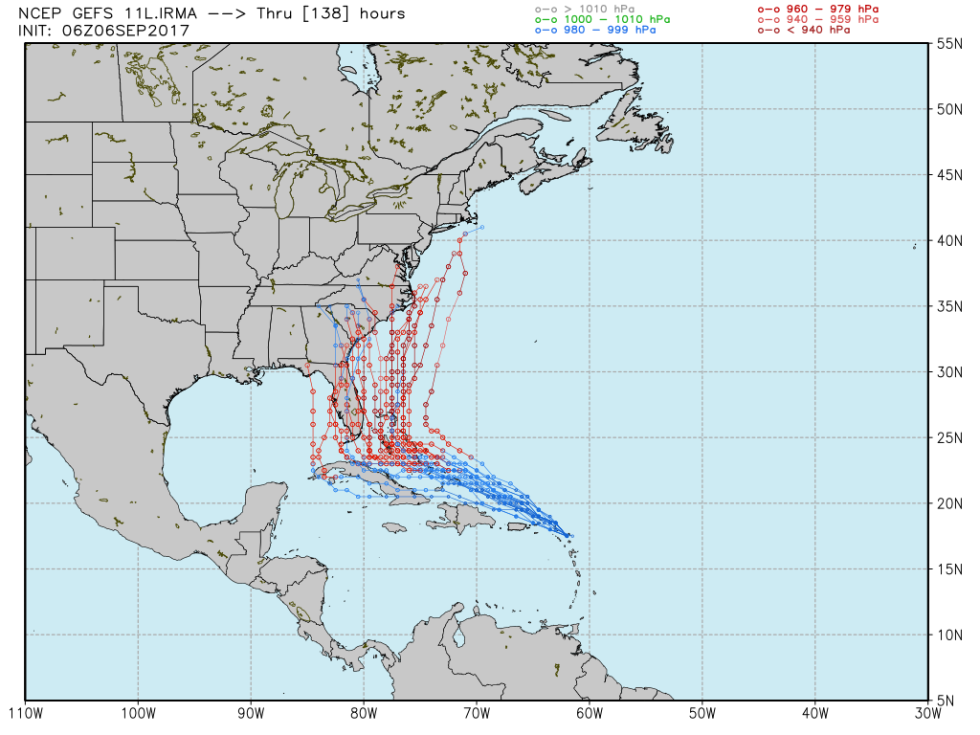

#Hurricane track european model verification#
(Image credit: 2021 National Hurricane Center Forecast Verification Report) NHC intensity forecasts improved considerably in 2021 Intensity forecasts have shown some modest improvement over the past ten years. Verification of official NHC hurricane intensity forecasts for the Atlantic, 1990 – 2021. Improved consensus modeling techniques are one major reason NHC track forecasts have improved so much in the past 30 years. These six models are used as input to various “consensus” models, such as “TVCN,” often referenced in NHC discussions for a storm. If one averages together the track forecasts from three or more of these six models, the NHC official forecast will rarely depart much from it. HWRF: Hurricane Weather and Research Forecasting regional model, initialized using GFS dataĬOAMPS: COAMPS-TC regional model, initialized using GFS data HMON: Hurricanes in a Multi-scale Ocean-coupled Non-hydrostatic regional model, initialized using GFS data UKMET: The United Kingdom Met Office’s global forecast model GFS: The National Oceanic and Atmospheric Administration (NOAA) Global Forecast System model Here is a list of some of the top hurricane forecast models used by NHC:Įuro: The European Center for Medium-range Weather Forecasting (ECMWF) global forecast model The official 2021 NHC Atlantic track forecasts tended to have a northeast bias of 7-21 miles for one- to three-day forecasts (i.e., the official forecast tended to fall to the northeast of the verifying position). The HWRF, HMON, COAMPS-TC, and CMC models did respectably for forecasts up to 72 hours at longer time periods, the CMC and COAMPS-TC models performed poorly. The GFS model was the best model in 2021, followed by the European model. Beyond three-day forecasts, NHC forecast skill starts to drop off, as the CLIPER5 model starts weighting its forecasts using climatology, which becomes tougher to beat at long ranges. For that reason, the skill curve in Figure 2 shows relatively low skill for NHC forecasts for short-term forecasts out to one day skill increases for forecasts between one and three days, when persistence tends not to be a good forecast (hurricanes generally don’t move in a straight line at a constant speed for days on end). The CLIPER5 model (which combines the word “climatology” and “persistence” to show the nature of the forecasts it makes) is tough to outperform at short-term forecasts, since a hurricane will tend to keep moving in the same direction and at the same speed as at its initial point (this is called persistence).

(Image credit: 2021 National Hurricane Center Forecast Verification Report) Best track model in 2021: the GFSĪs usual, the official NHC track forecasts for Atlantic storms in 2021 were tough to beat, and none of the individual models outperformed the official forecast at any time period, when compared to a “no-skill” model called CLIPER5 (Figure 2). OFCL=Official NHC forecast GFS=Global Forecast System model HMON=Hurricanes in a Multi-scale Ocean-coupled Non-hydrostatic regional model HWRF=Hurricane Weather Research and Forecasting model Euro=European Center for Medium-range Weather Forecasting (ECMWF) model COAMPS=COAMPS-TC regional model.

Skill of the top computer model forecasts of Atlantic named storms in 2021, compared to a “no skill” model called CLIPER5 that uses only climatology and persistence to make a hurricane track forecast (persistence assumes that a storm will tend to keep going in the direction and at the same speed that it is currently going). The improvement in track forecast accuracy has slowed down in recent years, however, suggesting that forecasts may be nearing their limit in accuracy because of the chaotic nature of the atmosphere. Those numbers amount to an extraordinary accomplishment, one undoubtedly leading to huge savings in lives, damage, and emotional angst. Over the past 30 years, one- to three-day track forecast errors have been reduced by about 75% over the past 20 years, four-day and five-day track forecast errors by 50 – 60%. (Image credit: 2021 National Hurricane Center Forecast Verification Report)ĭuring the 2021 Atlantic hurricane season, NHC track forecasts had accuracies near or better than the five-year average, with two-day and three-day track forecasts setting new records for accuracy. Verification of official NHC hurricane track forecasts for the Atlantic, 1990 – 2021. Put your trust in the National Hurricane Center, or NHC, forecast.Īlthough an individual model may outperform the official NHC forecast in some situations, the 2021 National Hurricane Center Forecast Verification Report documents that overall, it is very difficult for any one model to consistently beat the NHC forecasts for track and for intensity. For those puzzling over the various hurricane computer forecast models to figure out which one to believe, the best answer is: Don’t believe any of them.


 0 kommentar(er)
0 kommentar(er)
